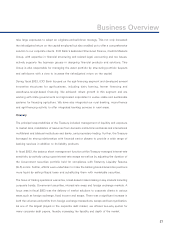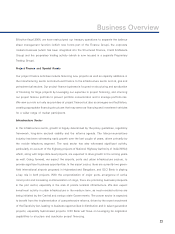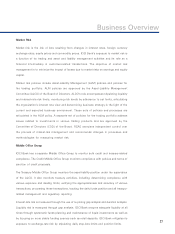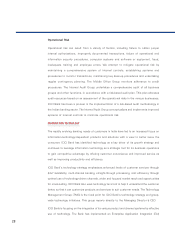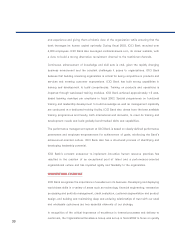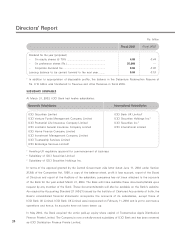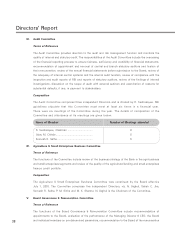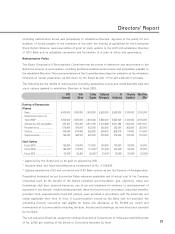ICICI Bank 2003 Annual Report Download - page 31
Download and view the complete annual report
Please find page 31 of the 2003 ICICI Bank annual report below. You can navigate through the pages in the report by either clicking on the pages listed below, or by using the keyword search tool below to find specific information within the annual report.
29
Business Overview
initiative across its retail and wholesale banking business units, linking various product and
delivery systems across the two groups. This initiative underpins ICICI Bank’s
multi-channel customer service strategy and seeks to deliver customer-related information
consistently across various access points.
In line with our commitment to offer its customers a seamless banking experience, we
installed our Customer Relationship Management (CRM) software at various customer access
points in fiscal 2003. The CRM software solution allows various channels to service customer
needs at all touch points, and across all products. The solution has been deployed across
the phone banking channel as well as a large number of branches. The solution gives a
comprehensive view of the customer at the access point, enhancing understanding of
customers and their needs. It optimizes processes and functions related to the customer, to
enhance the efficiency and effectiveness of customer servicing. The solution also ensures
that every customer request or complaint is tracked till its completion and escalated if
standard turnaround times are exceeded.
HUMAN RESOURCES
In fiscal 2003, ICICI Bank continued its commitment to acquiring, developing and enhancing
its human resource potential. ICICI Bank views its human capital as a key source of competitive
advantage. Consequently, the development and management of human capital is an essential
element of our strategy and a key management activity.
Human resources management in fiscal 2003 focused on the continuous improvement of
recruitment, training and performance management processes. While ICICI Bank is India’s
second-largest bank, it had just over 10,600 employees at March 31, 2003, demonstrating
our unique technology-driven, productivity-focused business model.
ICICI Bank continues to be a preferred employer at leading business schools and higher
education institutions across the country, offering a wide range of career opportunities
across the entire spectrum of financial services. Robust ability-testing and competency-
profiling tools are being used to strengthen the campus recruitment process and match
the profiles of employees to the needs of the organization. In addition to campus recruitment,
ICICI Bank also undertakes lateral recruitment to bring new skills, competencies and
experience into the organization and meet the requirements of rapidly growing businesses.
ICICI Bank also encourages cross-functional movement, enriching employees’ knowledge




